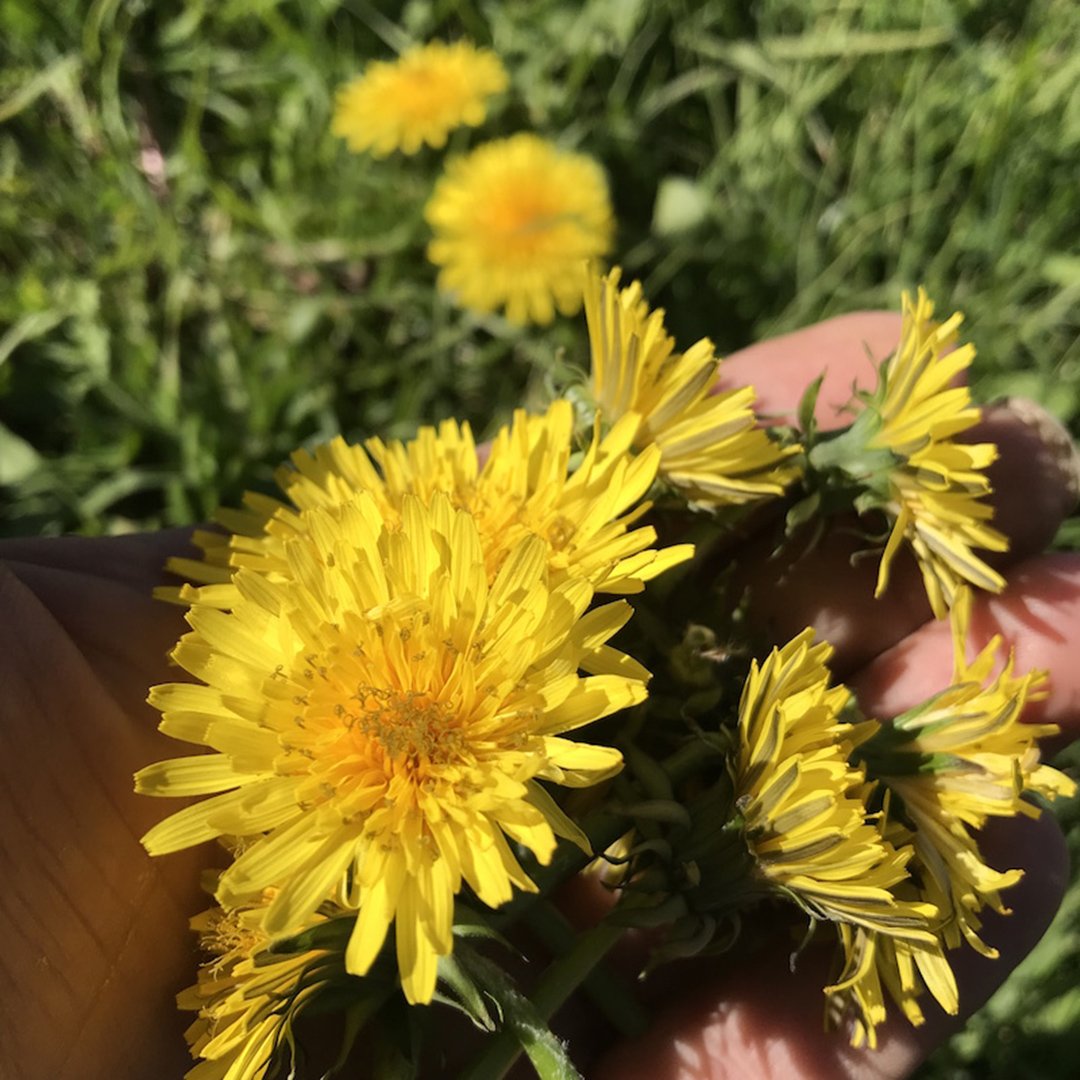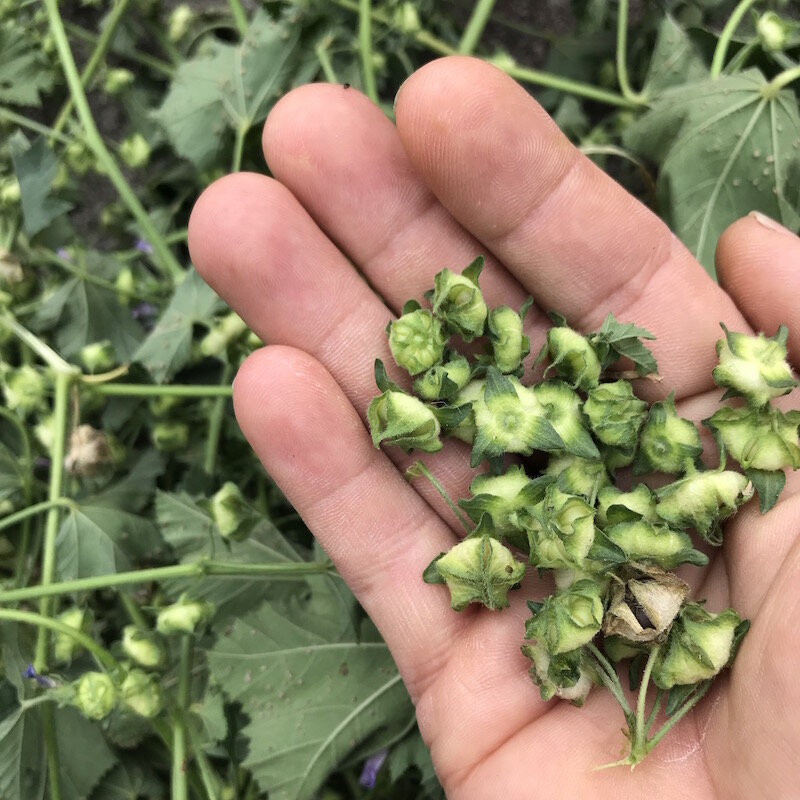5 best wild edible weeds of springtime
Spring has sprung, and to celebrate the upcoming warm season we selected below 5 of the best wild edible and medicinal plants growing in your garden right now.
Wild plants -i.e. weeds- grow everywhere all the time, and with the warming up of spring, they are now blooming.
You can look at them with disdain, or get to know them and find out that you can have some free food growing without effort in your yard.
We will start with dandelion, the amazing food and medicine plant that right now is brightening up your yard with buckets of yellow flowers.
1-Dandelion
Dandelions are one of the best edible weeds that you can find growing in your backyard. It is an important food source celebrated in both Eastern and Western herbalism and loved by countless cultures. This plant grows all over the world (bar the tropics), including your backyard. See here for the distribution map in Australia.
In Sydney and South-East Australia the pesky weed flowers all year round and offers a continuous supply of greens. Read this article to learn how to identify this incredibly beneficial treat! You can eat the flowers, the leaves and the roots too.
Dandelion - Taraxacum officinale
Where does it grow: Cosmopolitan, naturalised to Australia.
As food: The all plant is edible, leaves in salads, flowers in fritters and roots as parsnips substitute. Two-year-old roots are also ground to make an excellent, caffeine-free coffee.
As medicine: The dandelion is a commonly used herbal remedy. It is especially effective and valuable as a diuretic because it contains high levels of potassium salts. The plant is used internally in the treatment of gall bladder and urinary disorders, gallstones, jaundice, cirrhosis, dyspepsia with constipation, oedema associated with high blood pressure and heart weakness, chronic joint and skin complaints, gout, eczema and acne. A tea made from the leaves is a mild laxative.
2-Sow thistle
Sowthistle (aka milkthistle or sow thistle) is everywhere, all over the world and across several living conditions, from tropical to arid, from farm crops to backyard gardens. All over the world. This plant produces thousands of seeds (as much as 25,000 per plant) and each one of them has a 90% chance of germination. Yes, we are talking about a highly skilled invasive, but that is not necessarily bad, as sowthistle is food for a lot of ethnicities. See this article for more info, maps and recipes.
Sowthistle- Sonchus species
Where does it grow: Cosmopolitan, naturalised to Australia, cross-breeding with native Sonchus.
As food: Young leaves, raw or cooked, they can be added to salads, cooked like spinach or used in soups etc. Stems - cooked like asparagus or rhubarb. The milky sap has been used as chewing gum by the Maoris of New Zealand.
As medicine: The plant is emmenagogue and hepatic. An infusion has been used to bring on a tardy menstruation and to treat diarrhoea. The latex in the sap is used in the treatment of warts. The gum has been used as a cure for the opium habit. The leaves are applied as a poultice to inflammatory swellings. An infusion of the leaves and roots is febrifuge and tonic.
3-Chickweed
Chickweed is a little herbaceous plant that grows all over South Eastern Australia with records showing it growing all the way up into the tropics, see the map here for the spread. It is a celebrated edible, outstanding medicine and easy to identify, once you know what to look for. See this article for more info on how to identify this plants and recipes for using it in food as food and medicine.
Chickweed - Stellaria media
Where does it grow: Cosmopolitan, naturalised to Australia.
As food: Chickweed is mostly eaten raw. The whole plant is edible but the stalks tend to be fibrous. What people do most with chickweed is use it as a green in sandwiches and salads, as a side dish and/or garnish or added to smoothies together with other greens or fruits. Some people go to the trouble to pick only the leaves but most just eat the whole plant. Please be mindful that as the plant gets older it gets more and more stringy.
As medicine: Chickweed has a very long history of herbal use, being particularly beneficial in the external treatment of any kind of irritated skin condition. It has been known to soothe severe itchiness even when all other remedies have failed. It can be applied as a poultice to relieve skin rashes or an infusion of the fresh or dried herb can be added to bathwater and its emollient property will help to reduce inflammation – in rheumatic joints for example – and encourage tissue repair. I mostly infuse it in oil and, together with plantain, prepare a skin salve with it. See this article for instructions on how to make this simple home remedy. It is great to heal scratches, little scars and generally to sooth the skin when irritated.
4-Mallow
Mallow grows all over the world, a naturalised species on all continents. In Australia, the most common exotic Mallows are Malva silvestris ( tall mallow), M. neglecta ( dwarf mallow) and the impressive M. parviflora (small flowering mallow) which is wide-spread throughout the continent, including arid inland and the tropics. There is then the native hollyhock, Malva preissiana, which is widespread in NSW, SA and WA. You are bound to find mallow in your neighbourhood if not in your garden. See this article for more info on how to identify this edible and recipes for using it.
Mallow- Malva species
Where does it grow: Cosmopolitan, naturalised in Australia.
As food: Leaves: raw or cooked, a mild pleasant flavour, very nice in soups where they act as a thickener. The young leaves also make a very acceptable substitute for lettuce in a salad. The seeds have a nice nutty flavour. Flowers are added to salads or used as a garnish. The leaves are a tea substitute.
As medicine: The leaves and flowers can be eaten as part of a diet, or a tea can be made from the leaves, flowers or roots. The leaves and flowers are the main parts used, their demulcent properties making them valuable as a poultice for bruises, inflammations, insect bites etc, or they can be taken internally in the treatment of respiratory system diseases and problems with the digestive tract. When combined with eucalyptus, it makes a good remedy for coughs and other chest ailments
5-Flatweed
Flatweed and Sow thistle are very similar to their relative, the dandelion. All three have a yellow flower made up of dozens of overlapping petals rising from a flat rosette with a central crown. In Australia, we also have another less common variety of flatweed with white flowers called Hypochaeris albiflora, which is mostly found around Brisbane and Sydney. See this article for more info and recipes. All of these weeds are edible and all are worth your effort to bring them to your table.
Flatweed - Hypochoeris species
Where does it grow: Cosmopolitan, naturalised in Australia
As food: All parts of flatweed plants are edible; however, the leaves and taproot are most often harvested. The leaves range in flavour from slightly bitter to bland. They can be eaten raw in salads, but are most often steamed or tossed in a pan with oil and garlic and served with lemon and salt. It is best to select younger leaves, as they can become fibrous and stringy when older. The flowers can be collected all year round, with a spike in flowering occurring in the cooler months after rain. They can be infused in honey for a breakfast treat, or coated in flour for colourful fritters. The petals can be used in rice-paper rolls, or as a garnish for salads or cakes. The root can be dug out, scrubbed, lightly roasted and ground for a satisfying coffee substitute.
I do not know of many wild plants that can be harvested 356 days a year – and that makes this plant one of my most beloved wild veggies.

















